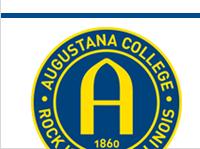Sewing the Way to Independence: a story of immigration, familial loss, and female power
Items from the archival collection MSS P:329 Anna Persson Cave family papers, 1897-2006
By Swenson Center student worker Ainslie Lounsbury
Exhibit on view March 10–August 1, 2020
One hundred years ago, women’s suffrage was ratified into the United States Constitution as the 19th Amendment. To celebrate, the Swenson Center is recognizing some of the incredible stories that demonstrate the independence, strength, and influence of women. Anna Persson Cave is one of those incredible female power stories—immigrating to the U.S. alone, traveling solo, raising two children with little financial support—her strength is an admirable example of the power of women.
Anna Persson was born in Halmstad, Sweden in 1887. In 1907, Anna immigrated to the United States alone, which was a long, difficult journey for a young 20-year-old. When she arrived, she traveled from New York City to Vermont to Massachusetts. In 1913, she met the love of her life, Frederick Cave. And so began a beautiful—yet tragic—love story that exemplifies the strength women have.
After getting married in 1914, Frederick and Anna had a daughter named Eleanor and a son named Eric. After Eric’s birth in 1919, Anna and the two children went back to Sweden to meet grandmother Cave. When they returned to America in 1920, however, they discovered Frederick had terminal cancer. He died on December 19, 1921. Anna and Frederick had only been married for seven years.
At 34 years old, Anna Persson Cave was a single, widowed mother of two children. During this time period, women were not encouraged to work outside the home, which would have helped keep her and her family afloat. She could have given up, but she chose to persevere. She took in sewing to support her young, growing family. After facing numerous obstacles, Anna found a way to overcome.
Source
MSS P:329 Anna Persson Cave family papers























